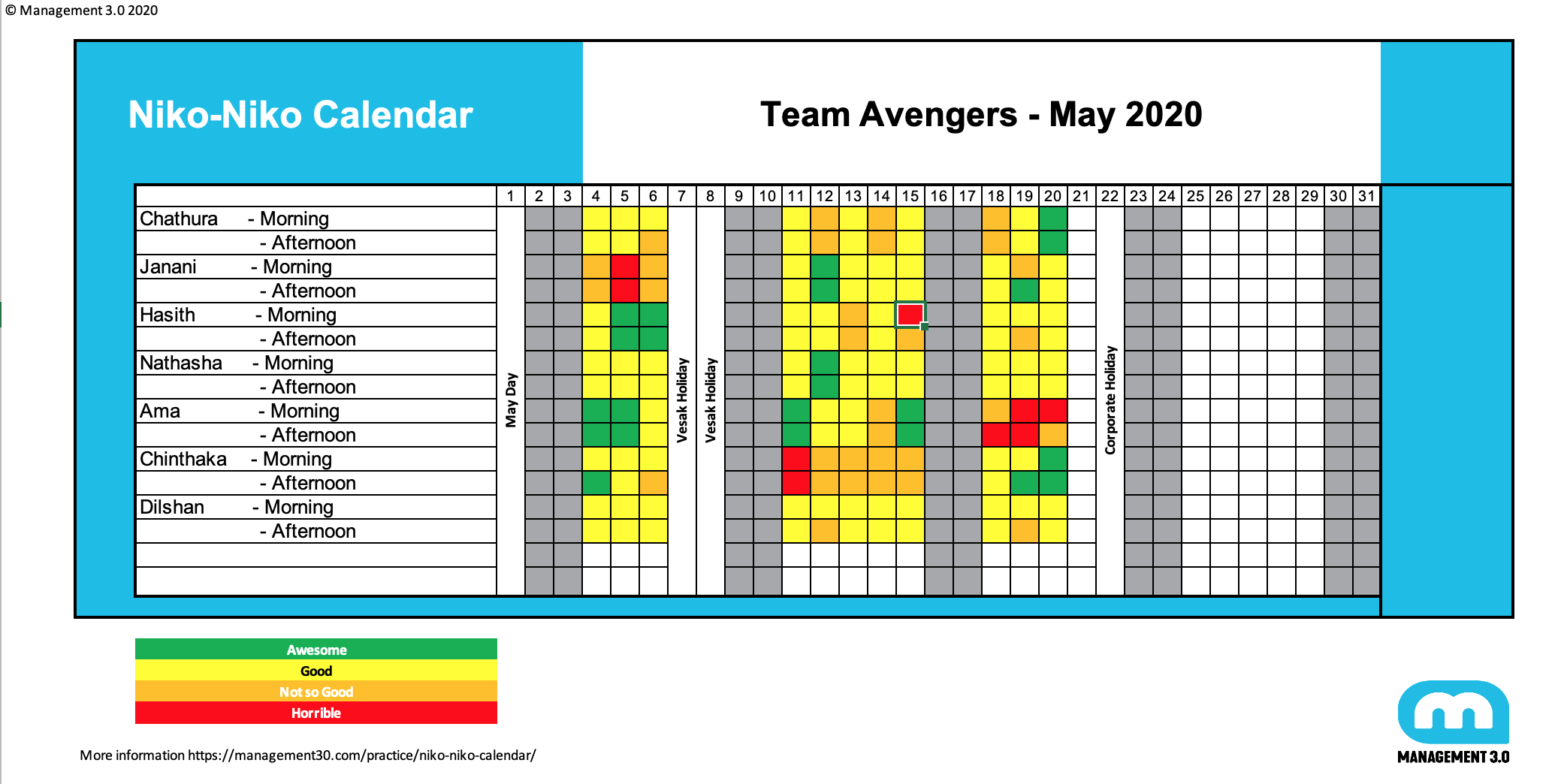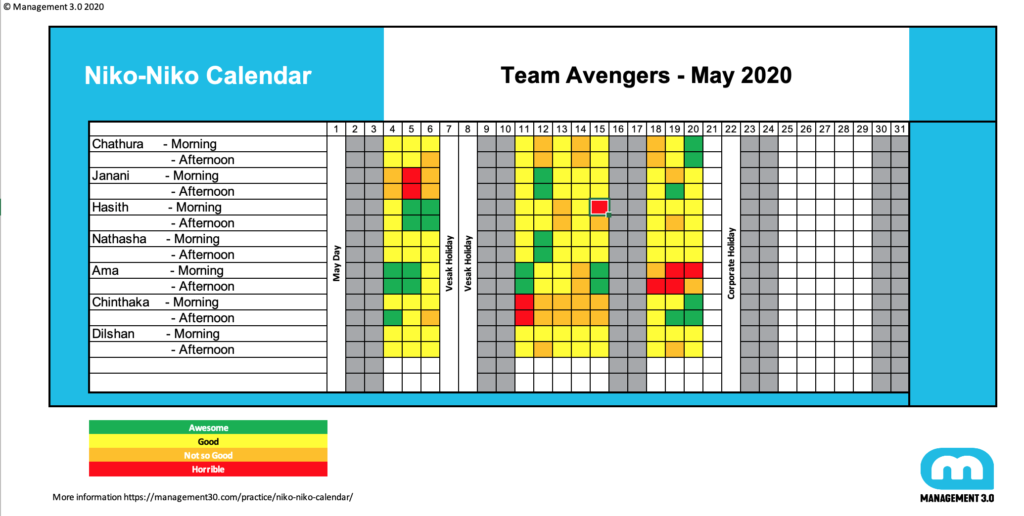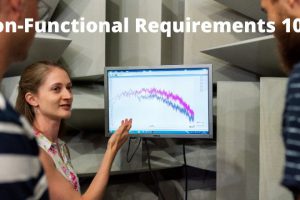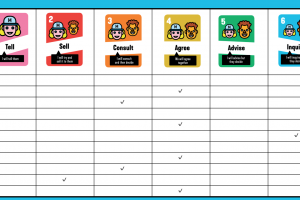
Identifying the Mood of Remote Team Members
Human beings are social animals. The moods of individuals change from time to time based on the context and environment that they are in. Human interaction plays a major part in these variations of emotional state. A positive conversation or experience may create a positive mood in someone while a negative encounter can create a negative mood. Moods are thus a situational thing and it fluctuates from time to time. Moods directly impact how we behave and interact, what we say and what we do. The immediate aftermath or reaction to a mood swing can be a positive or negative action but in the longer-term effect the behavior of an individual.
Today, the Coronavirus pandemic has thrown constant human interaction out of the window. Social distancing has become the norm and individuals are working from home or a remote location. The only human contact they have got for over a month now is with their family members. The amount of interaction outside that has most probably been limited to the grocery delivery guy. Face to face interaction of agile team members has been limited to video conferencing and individuals have not seen their work colleagues for a long time. However, people are still expected to meet work commitments while interacting with their colleagues from the office.
How has work pressure, fear of the pandemic, fear of losing the job, and stress from commitments at home affected Agile software teams? How can the changes of mood be captured in a remote setting? How can this be made visual to a remote working team? Finally, how can the Scrum Masters take necessary action to energize people based on the findings? Here I am explaining how I coached a team to use the Niko Niko Calendar to capture moods of team members and some actions we took based on the findings.
What is the Niko Niko Calendar?
The Niko-Niko Calendar is a technique that can be incorporated as a daily practice of a team to allow evaluation of their working day. Niko Niko in Japanese means ‘with a smile’. It was created at the Fujitsu Software Technologies Limited in Yokohama by Ms. Sachiko Kuruda in the year 2005. It allows teams to keep track of the moods of individuals at the end of the day. The technique can be customized to suit each team and thus we can use it to capture moods of team members multiple times even within one single day.
The steps to create the calendar are as given below.
- Find a space to create the calendar – The objective is to create a grid-like calendar to keep track of moods of team members. It can be created on a whiteboard, a wall or on a sheet of paper. For remote teams, a simple excel sheet or any online tool works fine.
- Put the names, avatars or profile pictures of the team members as the 1st column.
- Create the timeline by putting the days of the month as the 1st row right at the top of the calendar. The timeline can be for the entire month or even be tracked week by week.
- Customize the board if you want to capture the mood of team members multiple times within the day, i.e. morning and afternoon.
- Define moods that must be tracked associated with a coloured dot. For remote teams, this can be as simple as colouring a cell on an Excel sheet. Some teams select 3 moods while others use 4 as listed below. Teams have the freedom to customize this as relevant.
- Great Day (Green) – I am having an awesome day.
- Good Day (Yellow) – Few glitches here and there, but overall I am having an Okay day.
- Bad Day (Amber) – I am having a bit of a rough day. I few things have not gone my way.
- Horrible Day (Red) – I am having one of the worst days of my life. Multiple things have gone wrong which has affected me directly.
- Team members gather around the board at a designated time.
- The scrum master or any team member may facilitate the session. Team members mark how they feel on the Niko Niko board using the dots provided to them. Remote team members simply colour the relevant cell.
- Each individual is asked to explain how they feel and why they used the specific coloured dot.
The explanation provides a great opportunity for the team members to be open about any happy or sad situations they are facing. While the team celebrates any happy instances, the team may also sympathize and empathize with teammates who are having a rough day. The team may even get together to ideas to rectify that situation, but that can be done after the meeting.
How did I use the Niko Niko Calendar?
I selected one Scrum Team from Sri Lanka who has product dependencies with a feature team in Russia to conduct the Niko Niko calendar activity. All the team members of this team are from Sri Lanka and are currently working from their homes due to the Covid-19 situation. We started this activity on the 1st of April. Below are the steps I followed when carrying out the exercise.
- I downloaded a Niko Niko Calendar template shared on the Management 3.0 site which was created using Excel. I uploaded the file to a shared location in SharePoint and shared it with the participants.
- I then explained the Calendar to the Scrum Master and empowered him to do the preparation work in terms of adding the names of the team members and working days into the calendar.
- The Scrum Master highlighted the importance of capturing the mood in the morning and evening before winding up for the day. So, the calendar per day had two halves to capture the mood, one part in the morning and the other in the evening.
- I explained the technique to the team during a daily standup session and got agreement to update the calendar and to hold two 10-minute sync-up sessions twice a day.
- In the interest of time the team members updated their mood in the calendar offline and synced-up at the designated time to discuss why they’ve indicated each color.
This is how the team’s Niko Niko calendar looks like after ten days.

Learning & Actions
Key learnings and action items from the exercise are as listed below.
- Moods shift from time to time and it depends on the situation that each team member is in. The mood in the morning can be significantly different from the mood in the evening.
- This is a really great way to capture moods and happiness on an ongoing basis rather than waiting until the end of the iteration.
- It helps identify patterns in moods; change in mood within the day and across multiple days.
- It creates an open and pleasant environment to discuss the moods of individuals.
- It helps identify team members who may have problems that require special attention and help.
- The team members were able to identify the type of assistance required really easily. Most of the assistance identified were not just related to technical assistance but also related to household needs.
- It helps identify special occasions, achievements which might have been missed otherwise.
Immediate action identified through this activity are,
- The participants decided that the Niko Niko Calendar needs to be continued for the project. Keeping track of it online helps maintain it for evidence and it was decided to continue using the same way even after returning to the office.
- The team decided to analyze the mood trends of each individual at the end of each iteration.
- The team decided that a method to capture the primary reason for the mood is important and felt that at the moment this is limited to a mere discussion. The effective way to record this is to be explored by the team.
- The scrum master identified a couple of team members who need special attention and decided to take necessary action.
- Person 1 – Is unhappy because of Internet connectivity issues when working from home. He had not been able to log onto calls an entire day and had not been able to deliver his commitments for an entire week.
- Person 2 – A new team member who needs guidance and help in doing certain development tasks. The coach was able to discuss with the scrum master the special training that needs to be provided to the team member.
The Niko Niko calendar is a colorful way of representing the mood of individuals in a team. It helps identify problems that individuals face which may ultimately affect the entire project team. Have you tracked the mood of your team members? Do you know how happy they are and why they are happy? Have you done anything to increase the overall happiness of the team and made them smile? I would like to hear how you have used the Niko Niko Calendar in your projects. Comment below if you would like to share your experiences.



